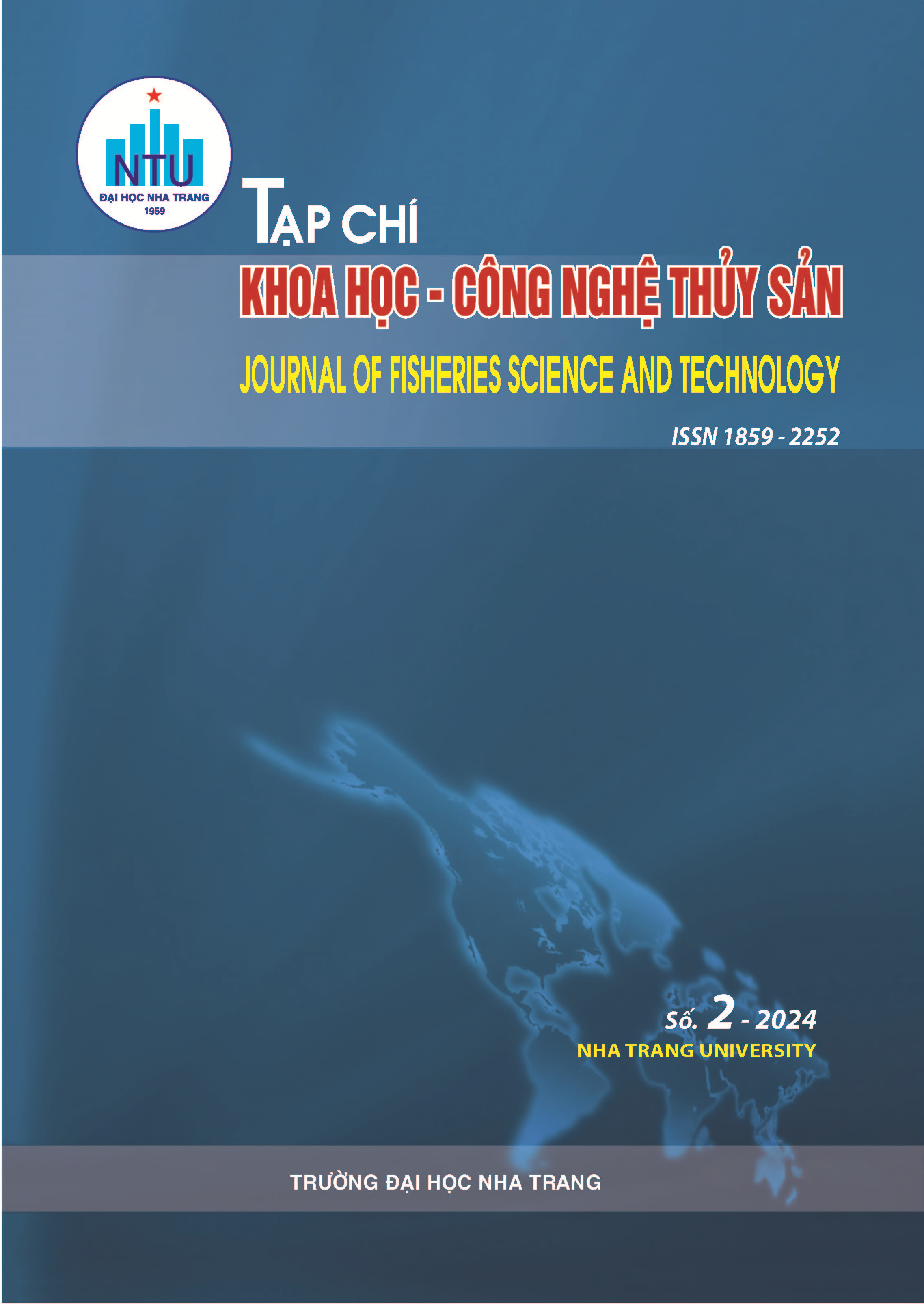##plugins.themes.huaf_theme.article.main##
Abstract
This study was conducted to determine the appropriate density for the growth of Pangasius krempfi fingerling. The fingerlings (length 46.0±7.0 mm and weight 1.4±0.6 g) were collected from exploitation fingerling households and randomly released in cages (60 m2) put in earthen ponds (1,500 m2/pond) at densities of 20, 30, and 40 ind/m2, corresponding to three treatments, each treatment was repeated 3 times. During the rearing period, the fingerlings were fed industrial feed containing 44-55% protein, 2 times/day. After 35 days of rearing, results showed that the daily growth length rate in the treatments was 1.33±0.07 mm/day (1.99±0.06%/day); 1.30±0.09 mm/day (2.01±0.13%/day); 1.28±0.11 mm/day (1.94±0.09%/day) (p>0.05), respectively; and the daily growth weight rate were 281.6±17.5 mg/day (5.84±0.12%/day), 257.9±30.6 mg/day (5.83±0, 32%/day) and 242.6±52.9 mg/day (5.45±0.31%/day) (p>0.05), respectively. The coefficient of variation of length and weight at different densities were15.8±1.0% and 42.9±3.2%, respectively (20 ind/m2); 17.6±2.8% and 49.1±8.4% (30 ind/m2); 15.4±1.3% and 46.5±6.3% (40 ind/m2). The highest survival rate achieved at the density of 20 ind/m2 was 91.0%, statistically significant difference (p<0.05) compared to the remaining densities of 30 ind/m2 (55.1%), and 40 ind/m2 (39.6%). From the research results, it can be seen that, in the experimental densities, the appropriate stocking density of bong-lao fingerlings is 20 ind/m2.
Keywords: Pangasius krempfi, fingerling, density, growth.

